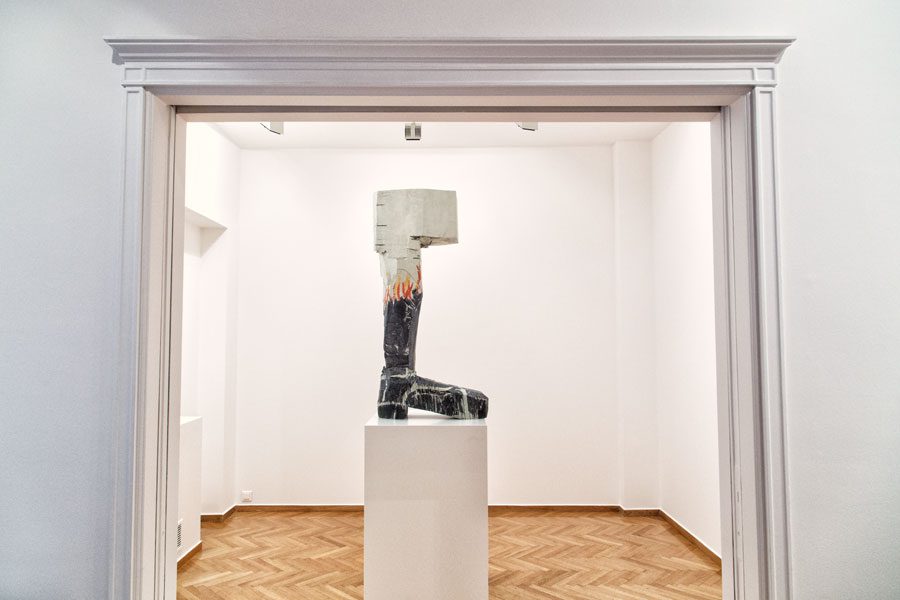ART-PRESENTATION:Natural Histories
“Natural Histories”, is an exhibition of two painted bronze sculptures by Georg Baselitz and Mark Grotjahn. When the figurative sculptures of ancient Greece and Rome were unearthed during the Renaissance, they were in a dismembered state, eroded, and had lost nearly all of their original color. Pliny the Elder, in his wide-ranging treatise Natural History (circa 77–79 A.D.), describes the original appearance of these antiquities in detail, brightly painted with pulverized malachite (green), cinnabar (red), azurite (blue), arsenic compounds (yellow, orange), or burnt bone and vine (black). Today in Athens, this exhibition invokes the transformative and fractured lineage of painted sculpture by pairing two artists whose approaches are linked in their bold metamorphoses of wood and cardboard into bronze; as well as their common excavation and engagement of figurative precedents ranging from antiquity to Expressionism. Seeking to expand the scope of traditional representation in art, Baselitz has constantly revisited and reimagined his chosen motifs over time. In monumental oil paintings, the self is an expressive vehicle, while roughly hewn and boldly painted wooden figures fuse traditional woodcarving techniques with primitivist and folk art impulses. As a consequence of working directly in wood, he has also explored large-scale bronze-casting in Römischer Gruß/Roman Salute (2004), a patinated bronze leg derived from a carved wooden form, wisps of red-yellow flame rise from a loosely contoured, irregularly painted black boot. The staccato hacks and scars of the original wood are mimetically produced in the rugged yet seamless cast surface of bronze. Similarly, Grotjahn’s Mask-cast in bronze from a spontaneous cardboard assemblage-records the nuances of the found material with its corrugations, dents, tears, and creases. With holes for eyes and a long tube for nose, it recalls the simple cardboard-box constructions of early classroom activity, supporting itself on a wooden pedestal, it remains stubbornly sculptural. The surface-painted bright orange and yellow with spatters of turquoise and white-resembles a gestural canvas. Replaying the inspirative relationship between Modernists and the arts of Africa and Oceania, Grotjahn’s Mask implies historical weight as well as immediate primal impulse.
Info:’’Natural Histories’’, Gagosian Gallery, 3 Merlin Str., Athens, Duration: 29/1-8/4/15, Days & Hours: Mon-Fri: 11:00-18:00, www.gagosian.com

